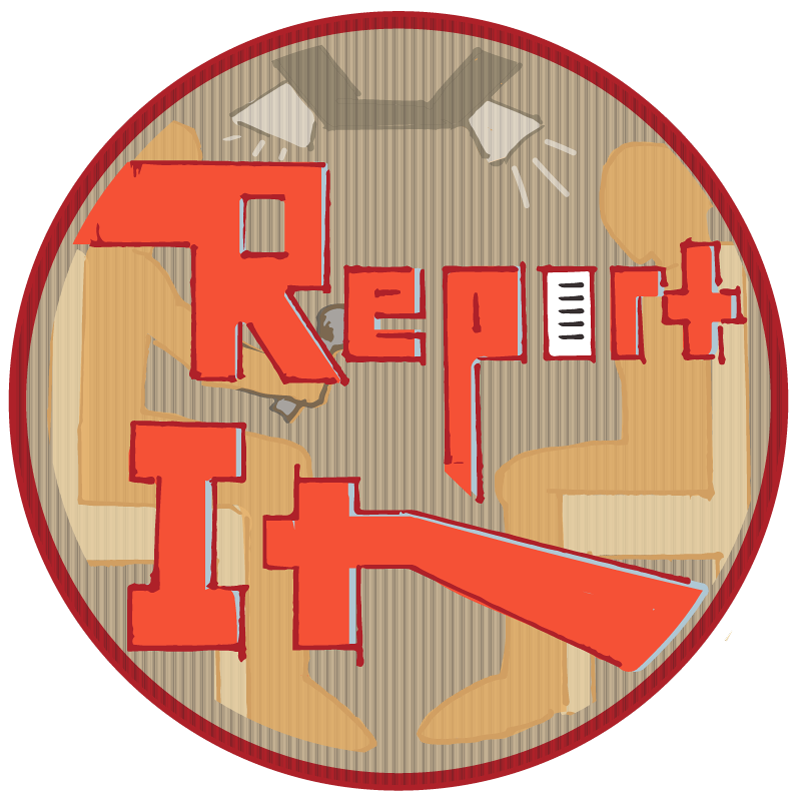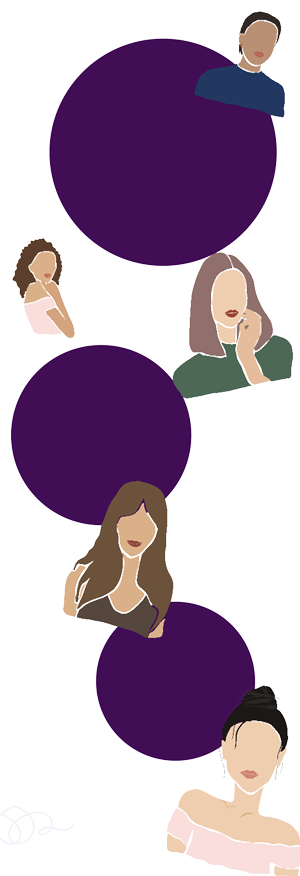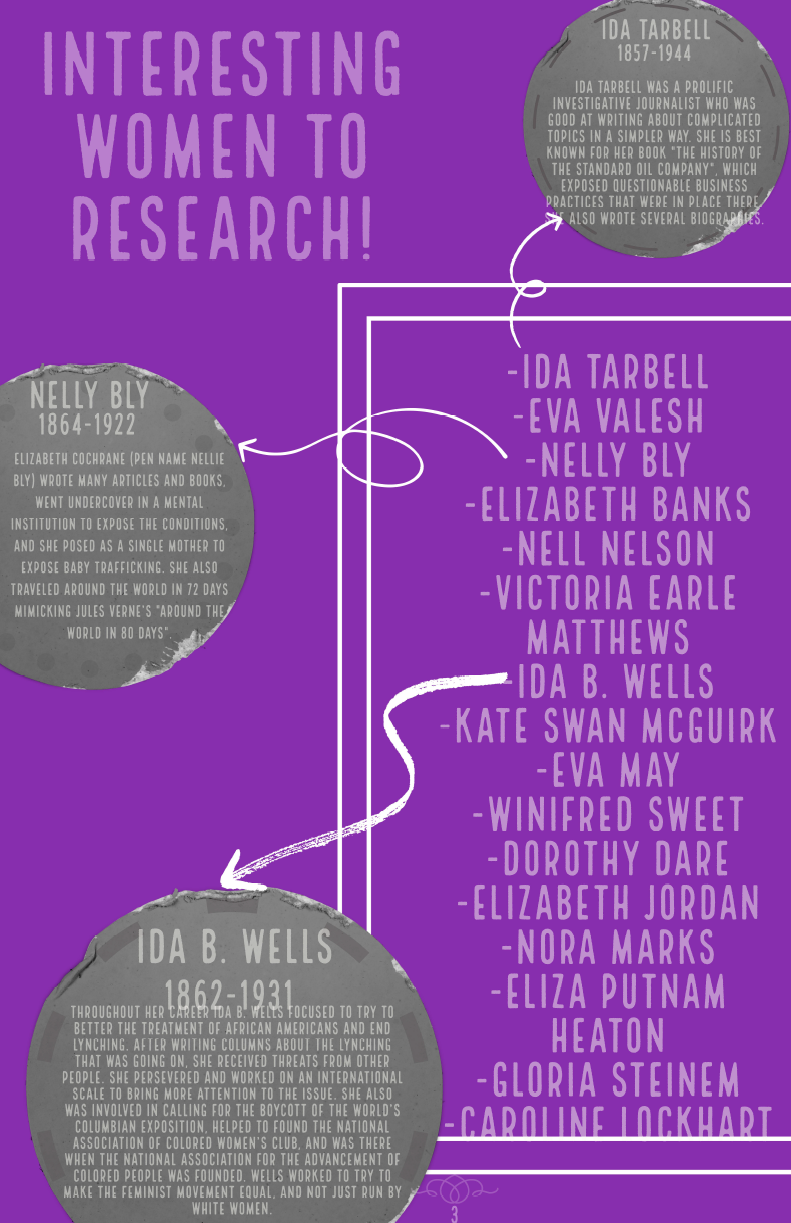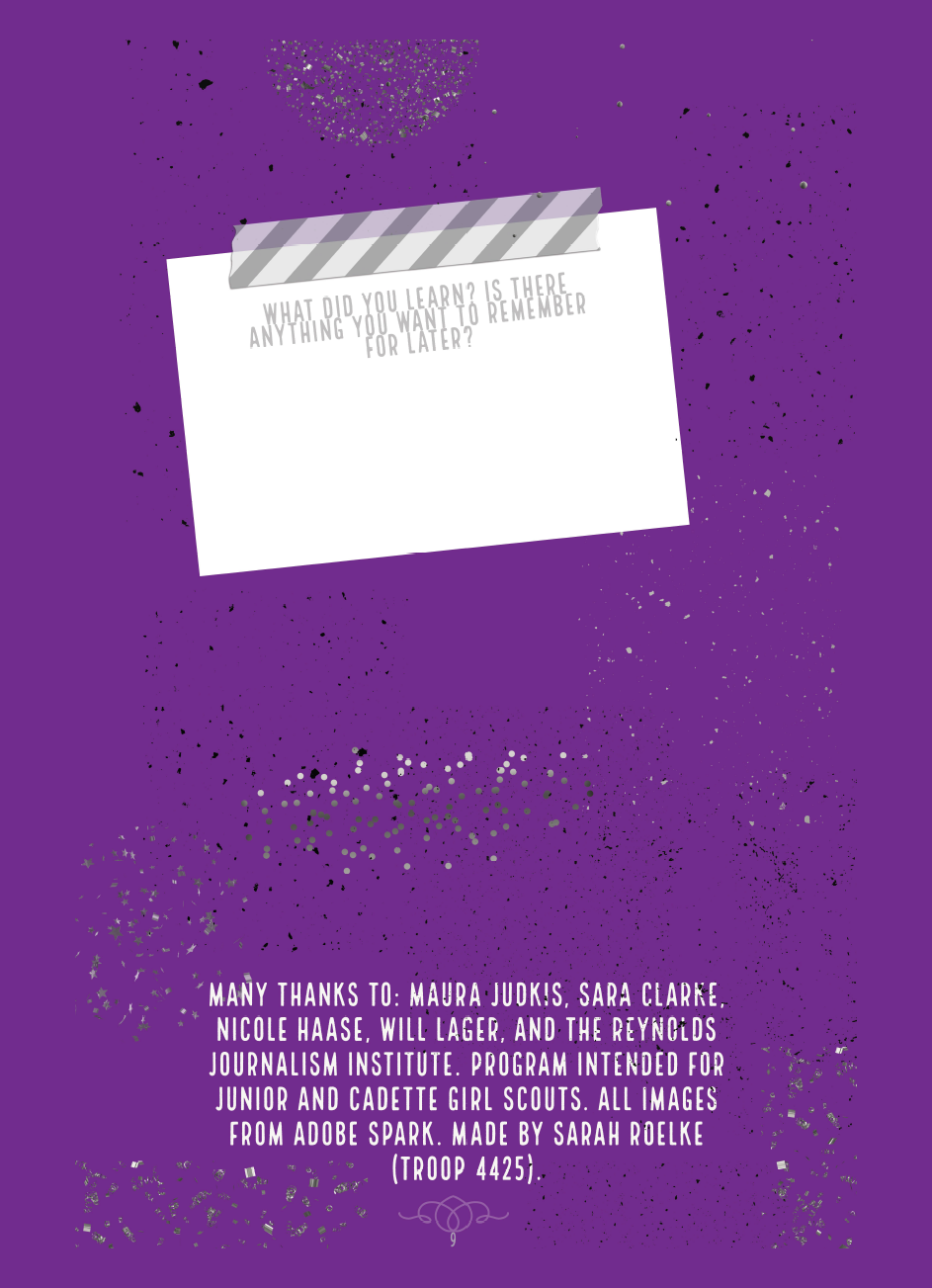REPORT IT!


When unique voices are united for a common cause, they MAKE HISTORY.
- Gloria Steinem (she was a Girl Scout!)
Welcome to the Report It! patch program for Juniors and Cadettes, or anyone who wants to learn more about journalism. As Girl Scouts we have a job to make the world a better place, and one way we can do that is by educating ourselves. In this guide you will find fun activities that you can do to learn more about journalism, and at the end you can order a fun patch!
Sarah R.
Girl Scout Troop 4425
March 2022

STEP 1:
Make a creative piece highlighting the work of a female journalist
Throughout history women have been taking a stand an raising their voices against important issues. Before we move ahead to the present and future, we must get inspiration from the past. Many of the journalists you may research helped move the women's rights movement forward by challenging boundaries in their writing. After researching one journalist, create a picture, song, poem, or something else of your choosing to tell the story of her, or a part of her story that you can connect with.

Did you know that many famous female journalists were Girl Scouts?! Including Katie Couric, Gayle King, Lisa Ling, Gloria Steinem, Taylor Bryant, Savannah Guthrie, Nikole Hannah-Jones, Jo Ling Kent, Nina Parker, and Kate Snow.
Gloria Steinem
Gloria Steinem is a feminist who rose with the Grassroots movement. She began her career as a journalist in New York in a time where her ideas were turned down. She was a huge part of the feminist and Equal Rights movement. Steinem founded the Ms. magazine, wrote several books, and received the Presidential Medal of Freedom from Barack Obama.
Nikole Hannah-Jones
Nikole Hannah-Jones is a Pulitzer Prize-winning investigative journalist. She is known for her reporting of civil rights. A New York Times reporter, in 2019 she launched the 1619 project, to commemorate the 400th anniversary of the beginning of slavery. She also helped to create the Ida B. Wells Society for Investigative Reporting.
Questions to answer
What was an accomplishment that was very hard to get, and took a lot of work for this woman?
What characteristics do I think this woman embodies?
What do I have in common with this woman?
What part of this woman's story do I think is most important?



STEP 2:
SPOTLIGHT SPORTS!
Sports is such an important part of the newspaper, being the reason why some people get the newspaper. According to some sports journalists, this aspect of journalism is very focused on the stats of the game, but also focused on the themes that you want to present about other things going on at that time both inside and outside or the game. You want to summarize the game. But also highlight something that you think is important or people may not have noticed. Post-game interviews that reporters do help with this.

Do this!
As with most forms of journalism, the most important thing to do is practice writing! To do this, watch a game or sporting match and write a summary or article of it, capturing things that you may think that the audience may want to read. The next day, look at three different newspapers or news websites, and compare your article of the event to theirs. What do you think you did well writing and what do you think you could improve on?

STEP 3:
Getting information from good sources
Make two skits:
One demonstrating examples of good sources
- and -
One demonstrating examples of bad sources
When journalists are researching for articles, and when we as consumers are reading these articles, we have to make sure we are checking what we read.
➥ Play the escape room ▨
Read this National Geographic article about spotting fake news
Journalism word search
Complete this word search using the words at the bottom.
BONUS: talk with your troop about the connections between all of the words to journalism, and make a mind map including all the words.

| Attribution | Documentation |
| Confidential | Editorial |
| Audience | Expose |
| Crosscheck | Ida Tarbell |
| Digital | Impartial |
| Interview | Reporter |
| Investigative | Sources |
| Muckrakers | Undercover |
| Nellie Bly | Viewpoints |
| Opinion | Words |


STEP 4:
Learn about the techniques used in investigative journalism
Interview someone in your family, Girl Scout troop, class, etc. on an issue (maybe the one you plan to research for step 5!) and practice techniques mentioned.
Read about a kid changemaker who created positive change with their words, and then someone who created negative change with their words. Create a Venn diagram of the two.

Create an alternative history timeline of how the world would have gone if one of the important investigations had not taken place. Have two people in your Girl Scout troop present pro and con arguments for a decision your troop needs to make. Take note of what they say, and write a mini-article to post to Rallyhood, or share it with your troop so your troop members can make an informed decision!
Sources from Maura Judkis, Washington Post

STEP 5:
Highlight an issue by writing an article
Now that you have finished the first four steps of this patch, have you started to see what you would and would not do if you were to write an article? As Girl Scouts we like to educate others on issues that are important, and make the world a better place. To wrap up this patch you are going to be writing an article on an issue that you think really needs attention.
Remember how from step one the muckrakers wrote articles to expose and things around them? One article can set off a chain reaction to solve problems! Once you are done, share it with your family, class, place of worship, Girl Scout troop, or even local newspaper!
If you have earned the Junior Digital Photography badge you could put a picture that you took alongside your writing.
If you are earning the Cadette Comic Artist badge you could create a political comic to represent why journalism is so important, report the story you are trying to cover.
If you are working on the Cadette Public Speaker badge, share your findings about journalism with others through a presentation, and who knows? Maybe you can spark a sense of passion for journalism in them!







